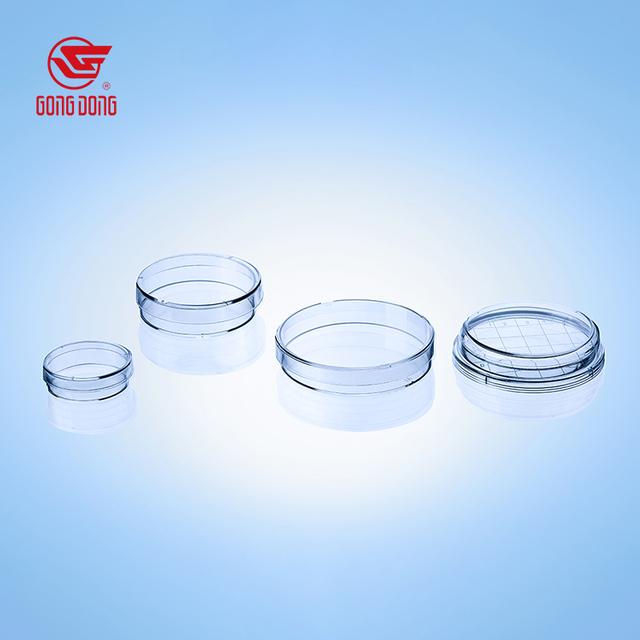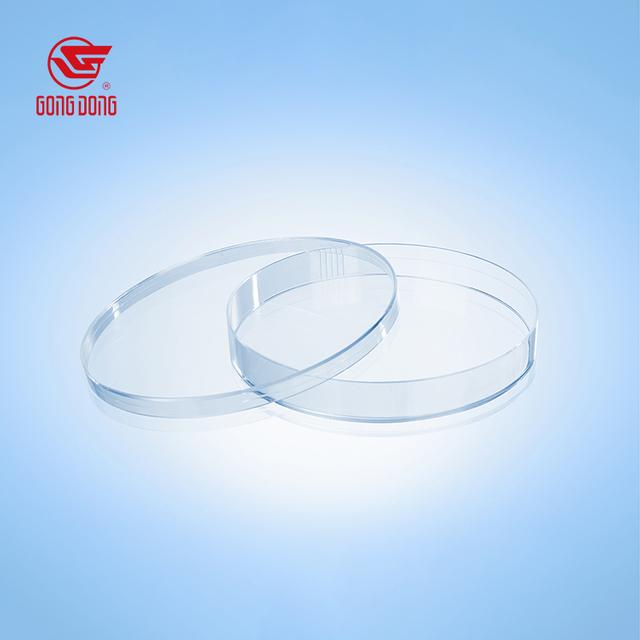

Views: 0 Author: Site Editor Publish Time: 2025-09-29 Origin: Site








Outpatient urine cultures have a 68.8% contamination rate.
Gongdong petri dish designs let you clean well. They help stop contamination. This gives you good results in sterile conditions.
Petri dishes are very important in microbiology labs. They stop germs in the air from getting to samples. They also make it easy to watch what happens to samples.
Make sure the petri dish lid fits tightly. A good fit helps stop germs from getting in. It keeps the cultures safe from contamination.
Use clean methods when you handle petri dishes. Clean your workspace before you start. Wear gloves to protect the samples. Try not to let the samples touch the air for long. This keeps the cultures pure.

The lid and base of a petri dish fit together to protect your samples. The lid sits on top but is not tight. This lets air move in and out. It also stops germs and spores from getting inside. You can count on this fit to lower contamination risks. Gongdong® Petri Dishes have lids that fit well. They let gases pass but keep out dust and germs. This helps you keep your cultures pure and safe from contamination.
Tip: Always make sure the lid fits before starting your experiment. A good lid fit lowers contamination risks and stops cross-contamination.
Picking the right material for your petri dish is important. Glass dishes can be used again after sterilizing. They do not react with chemicals and you can see through them. Plastic dishes, like polystyrene ones, are thrown away after one use. They come already clean and are easy to use. Gongdong® Petri Dishes are made with special injection molding. This makes every dish strong and the same thickness. You can see your cultures clearly, so you can spot contamination early.
Here is a table that shows how different design features help you prevent contamination:
Design Feature | Contribution to Contamination Prevention |
|---|---|
Lidded Design | Minimizes exposure to airborne contaminants, reducing the risk of microbial growth. |
Transparency | Allows for easy observation of cultures while maintaining a controlled environment. |
Material Properties | Can be sterilized to prevent contamination and support proper handling. |
You can look through the petri dish to watch cells grow. This helps you find contamination fast. You do not have to open the dish and risk spreading germs.
Glass petri dishes:
You can use them again after cleaning.
They do not break down with chemicals or heat.
They can break easily, so handle them with care.
Plastic petri dishes:
You use them once and throw them away.
They are already clean when you get them.
They are not as strong but are simple to use.
Your petri dish should meet high sterility standards. Gongdong® Petri Dishes are made in very clean rooms. This means they are free from germs. The special molding process makes sure each dish is the same and works well. You can trust these dishes for your lab work.
Injection molding makes dishes with exact shapes and sizes.
The process uses materials like polystyrene, polypropylene, and polycarbonate.
Each dish is packed to stay clean until you use it.
Some petri dishes have vents or sections. Vents help control air inside the dish. This stops water drops from forming, which can cause contamination. Sections let you test more than one sample at a time. This lowers the chance of mixing samples.
Petri dishes with sections:
You can test many samples in one dish.
You lower the risk of mixing samples.
Ventilated petri dishes:
You control the air inside the dish.
You stop water drops and keep samples safe.
You must handle petri dishes the right way to keep your lab clean. Always use clean dishes and do not touch the inside. Keep dishes in a clean place and throw them away safely after use. These steps help you lower contamination risks and keep your experiments safe.

You need to be careful when using petri dishes. Always work in a clean place and wear gloves and a lab coat. Hold the petri dish by the edge so you do not touch the inside. Use only clean tools and never touch the agar with your hands. Keep the lid off for as little time as possible to stop germs from getting in.
Work in a clean and sterile place.
Hold dishes by the edges only.
Use clean tools for every step.
Do not touch the agar surface.
Seal dishes well and store them safely.
Write on each dish with waterproof markers.
Check dishes for cracks before using them.
Store dishes upside down to stop water drops.
Tip: Check your petri dishes often for cracks or damage. Throw away any that look broken. This helps stop germs from spreading.
Sterilizing petri dishes is very important to keep them free from germs. Pick the right way to sterilize based on what your dish is made of. Glass petri dishes can be used again if you clean them with heat or steam. Autoclaving uses hot steam and works well for glass and metal. Dry heat also works for glass but takes more time.
Plastic petri dishes, like Gongdong® ones, are used once and come already clean. Do not use an autoclave on plastic dishes because they can melt. If you have heat-sensitive plastics, you can use chemicals, but be careful with them.
Autoclaving: Good for glass and metal, not for most plastics.
Dry heat: Works for glass, not for plastics.
Chemical cleaning: Use for plastics that cannot take heat, but be safe.
Sterilization Technique | Suitable For | Effectiveness | Notes |
|---|---|---|---|
Autoclaving | Glass, metal | High | Not for plastic petri dishes |
Dry Heat | Glass, metal | High | Longer process, not for plastics |
Chemical Sterilization | Plastics, some tools | High | Handle chemicals with caution |
Single-use petri dishes are ready to use and help stop germs. Reusable dishes must be cleaned well before you use them again. Always check dishes after cleaning to make sure they are not dirty or broken.
Aseptic techniques help keep your petri dishes free from germs. Clean your tools and wash your hands before you start. Write your name, date, and medium on the bottom of the dish. Use a clean toothpick or loop to put samples on the agar. Do not put too many germs on the plate. Turn the dish upside down when you grow cultures to stop water from dripping.
Follow these steps for best results:
Clean your workspace and tools.
Wash your hands and put on gloves.
Write on the bottom of the dish.
Use clean tools to put samples on the agar.
Keep the lid off for a short time.
Turn the dish upside down to grow cultures.
Check your cultures often for germs.
If you do not use aseptic techniques, germs from your hands or tools can get in. This can ruin your results and cause cross-contamination.
Note: Not following aseptic steps can let germs in every time. Always use the right steps to keep your cultures clean.
Seal and store petri dishes the right way to keep them safe. Wrap the dish tight with parafilm. You can also put dishes in clean plastic bags or cover them with foil for extra safety.
Method | Description |
|---|---|
Parafilm | Wrap the petri dish tight with parafilm to keep out germs. |
Sterile plastic bags | Put each petri dish in a clean plastic bag for extra safety when moving them. |
Aluminum foil | Cover petri dishes with foil to keep them clean and safe from germs. |
Keep sealed dishes in a clean, dry place. Always write on dishes so you know what is inside. Store dishes upside down to stop water from getting on your cultures.
Tip: Check your dishes often to find germs early. Take out any dirty dishes right away to protect your other samples.
Throwing away used petri dishes the right way keeps your lab safe. Sort and label waste as biohazard if needed. Use an autoclave to clean biohazard waste before throwing it away. Always follow the rules for cleaning and throwing away dishes based on what was grown.
Sort and label biohazard waste.
Use autoclaves to clean waste with heat.
Throw away petri dishes in special biohazard bins.
Have a plan for spills and use spill kits if needed.
Single-use petri dishes are easy to throw away because they are already clean and used once. Reusable dishes must be cleaned before you throw them away or use them again. Doing these things helps keep your lab free from germs and cross-contamination.
Note: Gongdong® Petri Dishes are clean and easy to throw away. They help you keep your lab safe from germs.
You can stop contamination in your lab with good petri dishes. You also need to follow the best steps.
If you clean dishes well, you stop germs from spreading. Careful handling keeps samples safe from mixing.
Using strong dishes like Gongdong® helps you get good results.
Benefit | Description |
|---|---|
Accuracy | Lowers the chance of germs mixing or spreading. |
Consistency | Helps you do safe and repeatable experiments. |